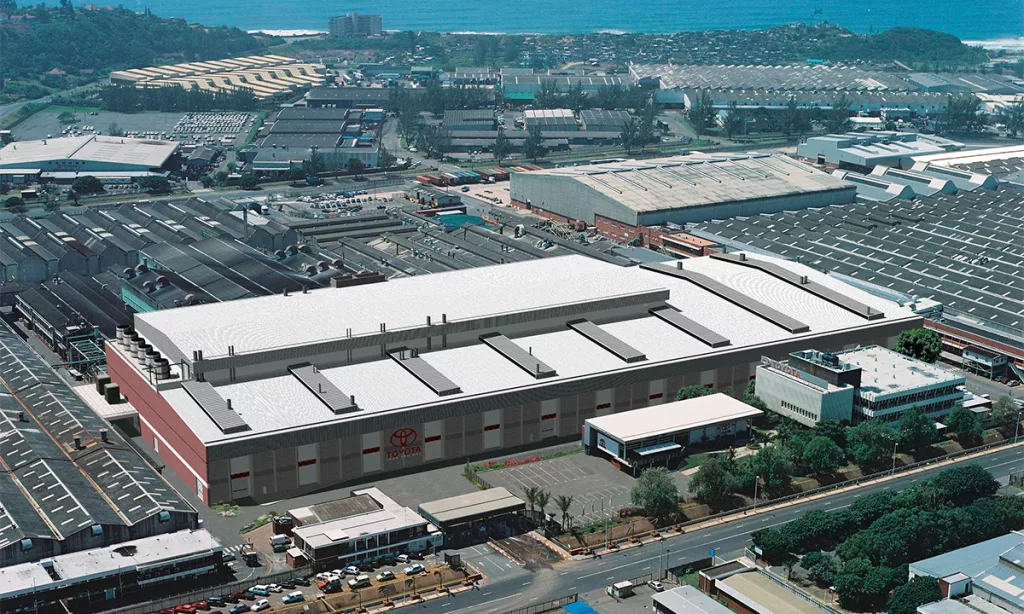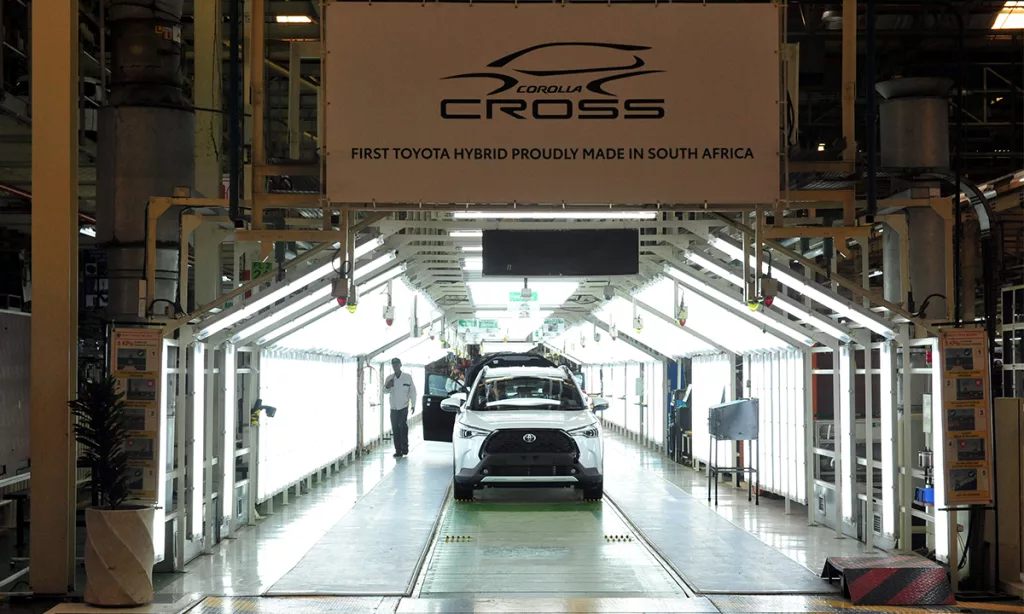Toyota Spends Millions Flood Proofing Durban Plant and Even More to Get Off Grid
Following the destructive and disruptive floods in early 2022, Toyota has spent considerable time and resources ensuring its Durban Plant is geared to withstand flooding. In addition, the automaker is also in the process of going green to be more proficient off-grid.

Image: Toyota
Looking for your next new or used Toyota? Find it here with CARmag.
TSAM (Toyota South Africa Motors) made a major announcement after it confirmed that it would bring its first pure BEV into South Africa in 2024. Dubbed, the bZ4X, this signals Toyota’s commitment and rapid investment into the BEV space which it hopes to sell 1.5 million units by 2026 and 3.5 million by the close of the decade. Lexus is taking an even more aggressive approach since it aims to be completely BEV by the close of the decade in Europe, North America and China. It will pursue this same approach of 100% BEV sales globally by 2035, or 11 years from now.
Related: Toyota’s Hilux is One Step Closer to Becoming an EV
Directives from the top, TSAM has been given the go-ahead to target all non-manufacturing operations in the efforts to be carbon neutral by 2025. For a manufacturer as large as Toyota, this will offset thousands of tons of CO2 emissions alone. Excluding the Durban plant, TSAM is planning on installing a total of 6.78 MWp (Megawatt peak) of renewable energy combined with 12.8 MWh (megawatt hour) of battery storage which will amount to R180 million of investments alone. In aid of this, the Atlas Road facility has already received a 3.39 MWp rooftop solar upgrade with 8 x 800 kWh Li-ion battery storage which results in 3 000 tons of CO2 reduction alone. The Sandton Solar Project will yield the same reduction once completed by 2025 from an estimated 3.39 MWp rooftop solar installation with 8 x 800 kWh Li-ion battery storage.
Aiming to be fully renewable by 2028, TSAM will require a total of 34 MWp of renewable energy amounting to a total investment of R743 million. To date, there has been 11.2 MWp achieved from R239 million invested during 2023. The breakdown of renewable power generation already achieved at the Durban plant is as follows: A-Yard: 2 MWp, TCP: 1.21 MWp, HiAce: 0.64 MWp, PPMD: 33 kWP. In 2024, TSAM will also add the Test Track (3.8 MWp) and Hino (0.912 MWp) to the list.
Related: Starter Classic: Toyota MR2
Other than future investments, TSAM has also taken several measures of flood-proofing the Prospecton plant in Durban following the natural disaster that significantly hindered production in early 2022. There have been 3 lines of defence established in water ingress into the state-of-the-art facility with the 3rd costing R128 million and requiring 835 key interventions at the Durban plant itself. This mitigates production risk via raised entry doors, key equipment being raised 200 mm off of the floor and the sealing of unused entry points around the facility. The second line of defence was a R108 million investment in proactive weather monitoring and maintenance systems and ongoing canal and river mouth maintenance and a stormwater drain upgrade. The 1st line of defence was a collaboration between TSAM and the local South African government who were encouraged to reinstall a washed-away road and rework the breached Umlazi river bank. The opening ceremony of the road took place most recently in September 2023 with the Ethekwini Mayor opening it up for business once again.

Image: Toyota
Following the devastating natural disaster in the region earlier in January, TSAM CEO Andrew Kirby confidently exclaimed that the Durban plant remained unaffected, which alludes to the massive flood-proofing project being a success.
Browse thousands of new and used cars here with CARmag.
The post Toyota Spends Millions Flood Proofing Durban Plant and Even More to Get Off Grid appeared first on CAR Magazine.
The Car Guide
Comments
Post a Comment